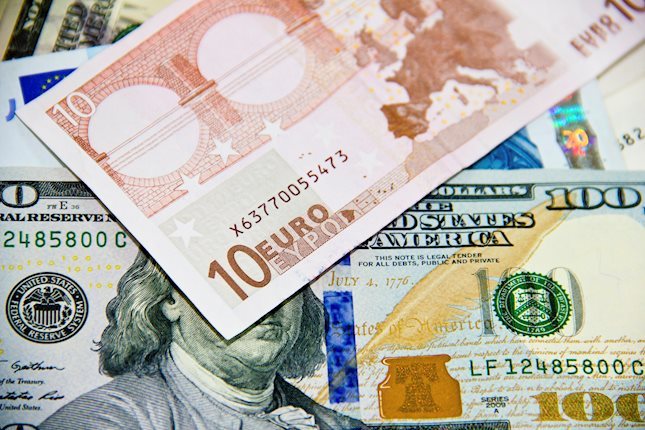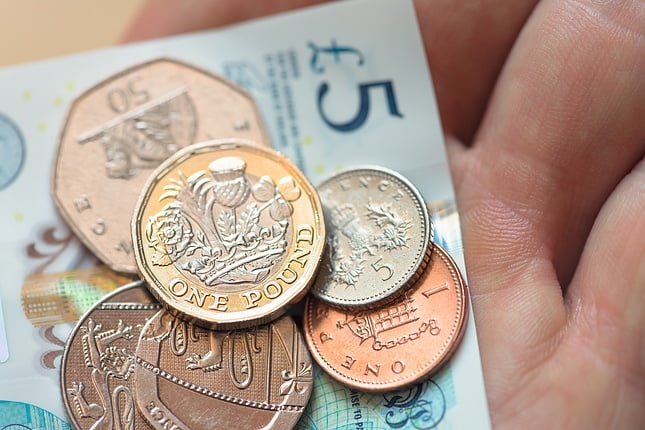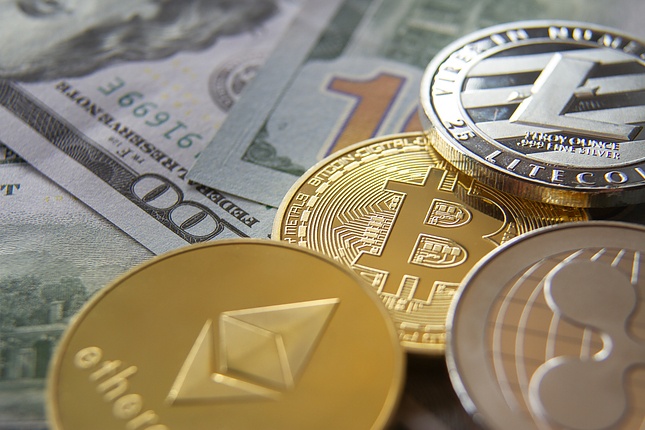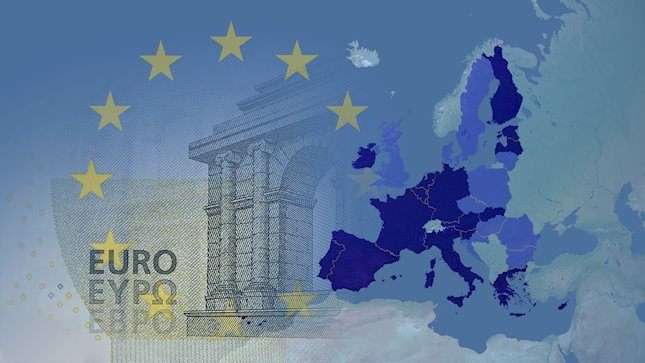- EUR/USD loses momentum to near 1.0530 in Monday’s Asian session.
- Eurozone’s inflation rose to 2.3% YoY in November.
- The cautious stance of the Fed provides some support to the USD and acts as a headwind for EUR/USD.
The EUR/USD pair faces some selling pressure to around 1.0530 amid the firmer US Dollar (USD) during the early Asian trading hours on Monday. Investors will closely monitor the speech by the European Central Bank’s (ECB) President Christine Lagarde and the release of the US ISM Manufacturing Purchasing Managers’ Index (PMI), which is due later on Monday.
Inflation in the Eurozone, as measured by the Harmonized Index of Consumer Prices (HICP), rose to 2.3% YoY in November from 2.0% in October, in line with market expectations. This figure overreached the ECB 2.0% target. Meanwhile, the Core HICP climbed by 2.8% YoY in November, compared to 2.7% in the previous reading, which was also in line with expectations.
Market participants have fully priced in a 25 basis points (bps) rate cut from the ECB in December, which would signify the bank’s fourth rate reduction this year. However, expectations of a substantial 50 bps reduction have been dwindling since last month, with slight enhancements in the Eurozone’s tepid growth forecast. The expectation that the ECB will cut interest rates at their December meeting exerts some selling pressure on the Euro (EUR).
On the other hand, the cautious stance of the US Federal Reserve (Fed) might continue to underpin the Greenback. Fed Chair Jerome Powell highlighted that “the economy is not sending any signals that we need to be in a hurry to lower rates. Powell added that “the strength we are currently seeing in the economy gives us the ability to approach our decisions carefully.” The markets now see nearly a 65.4% odd that the Fed will cut rates by a quarter point in December, according to the CME FedWatch Tool.
Euro FAQs
The Euro is the currency for the 19 European Union countries that belong to the Eurozone. It is the second most heavily traded currency in the world behind the US Dollar. In 2022, it accounted for 31% of all foreign exchange transactions, with an average daily turnover of over $2.2 trillion a day. EUR/USD is the most heavily traded currency pair in the world, accounting for an estimated 30% off all transactions, followed by EUR/JPY (4%), EUR/GBP (3%) and EUR/AUD (2%).
The European Central Bank (ECB) in Frankfurt, Germany, is the reserve bank for the Eurozone. The ECB sets interest rates and manages monetary policy. The ECB’s primary mandate is to maintain price stability, which means either controlling inflation or stimulating growth. Its primary tool is the raising or lowering of interest rates. Relatively high interest rates – or the expectation of higher rates – will usually benefit the Euro and vice versa. The ECB Governing Council makes monetary policy decisions at meetings held eight times a year. Decisions are made by heads of the Eurozone national banks and six permanent members, including the President of the ECB, Christine Lagarde.
Eurozone inflation data, measured by the Harmonized Index of Consumer Prices (HICP), is an important econometric for the Euro. If inflation rises more than expected, especially if above the ECB’s 2% target, it obliges the ECB to raise interest rates to bring it back under control. Relatively high interest rates compared to its counterparts will usually benefit the Euro, as it makes the region more attractive as a place for global investors to park their money.
Data releases gauge the health of the economy and can impact on the Euro. Indicators such as GDP, Manufacturing and Services PMIs, employment, and consumer sentiment surveys can all influence the direction of the single currency. A strong economy is good for the Euro. Not only does it attract more foreign investment but it may encourage the ECB to put up interest rates, which will directly strengthen the Euro. Otherwise, if economic data is weak, the Euro is likely to fall. Economic data for the four largest economies in the euro area (Germany, France, Italy and Spain) are especially significant, as they account for 75% of the Eurozone’s economy.
Another significant data release for the Euro is the Trade Balance. This indicator measures the difference between what a country earns from its exports and what it spends on imports over a given period. If a country produces highly sought after exports then its currency will gain in value purely from the extra demand created from foreign buyers seeking to purchase these goods. Therefore, a positive net Trade Balance strengthens a currency and vice versa for a negative balance.
Information on these pages contains forward-looking statements that involve risks and uncertainties. Markets and instruments profiled on this page are for informational purposes only and should not in any way come across as a recommendation to buy or sell in these assets. You should do your own thorough research before making any investment decisions. FXStreet does not in any way guarantee that this information is free from mistakes, errors, or material misstatements. It also does not guarantee that this information is of a timely nature. Investing in Open Markets involves a great deal of risk, including the loss of all or a portion of your investment, as well as emotional distress. All risks, losses and costs associated with investing, including total loss of principal, are your responsibility. The views and opinions expressed in this article are those of the authors and do not necessarily reflect the official policy or position of FXStreet nor its advertisers. The author will not be held responsible for information that is found at the end of links posted on this page.
If not otherwise explicitly mentioned in the body of the article, at the time of writing, the author has no position in any stock mentioned in this article and no business relationship with any company mentioned. The author has not received compensation for writing this article, other than from FXStreet.
FXStreet and the author do not provide personalized recommendations. The author makes no representations as to the accuracy, completeness, or suitability of this information. FXStreet and the author will not be liable for any errors, omissions or any losses, injuries or damages arising from this information and its display or use. Errors and omissions excepted.
The author and FXStreet are not registered investment advisors and nothing in this article is intended to be investment advice.
Editors’ Picks
EUR/USD remains heavy below 1.0550 as focus shifts to US ISM PMI
EUR/USD remians under heavy selling pressure below 1.0550 in early European session on Monday. The pair is dragged down by dovish ECB-speak and a firmer US Dollar following Trump tariffs threat on BRICS-fuelled flight to safety. Investors now look forward to US ISM Manufacturing PMI data due later in the day.
GBP/USD holds losses near 1.2700 on stronger US Dollar
GBP/USD consolidates losses near 1.2700 early Monday, reversing a major part of Friday’s positive move. The slide is sponsored by a goodish pickup in the haven demand for the US Dollar, as traders remain wary over the latest Trump tariffs threat on BRICS nations. US ISM PMI is next in focus.
Bitcoin consolidates while ETH, XRP rallies
Bitcoin consolidated on Monday following its recovery from last week’s pullback. At the same time, Ethereum and Ripple extended their rallies, driven by investors reallocating capital from BTC to altcoins, signaling the potential for continued upward momentum.
Eurozone PMI sounds the alarm about growth once more
The composite PMI dropped from 50 to 48.1, once more stressing growth concerns for the eurozone. Hard data has actually come in better than expected recently – so ahead of the December meeting, the ECB has to figure out whether this is the PMI crying wolf or whether it should take this signal seriously. We think it’s the latter.
Best Forex Brokers with Low Spreads
VERIFIED Low spreads are crucial for reducing trading costs. Explore top Forex brokers offering competitive spreads and high leverage. Compare options for EUR/USD, GBP/USD, USD/JPY, and Gold.





































